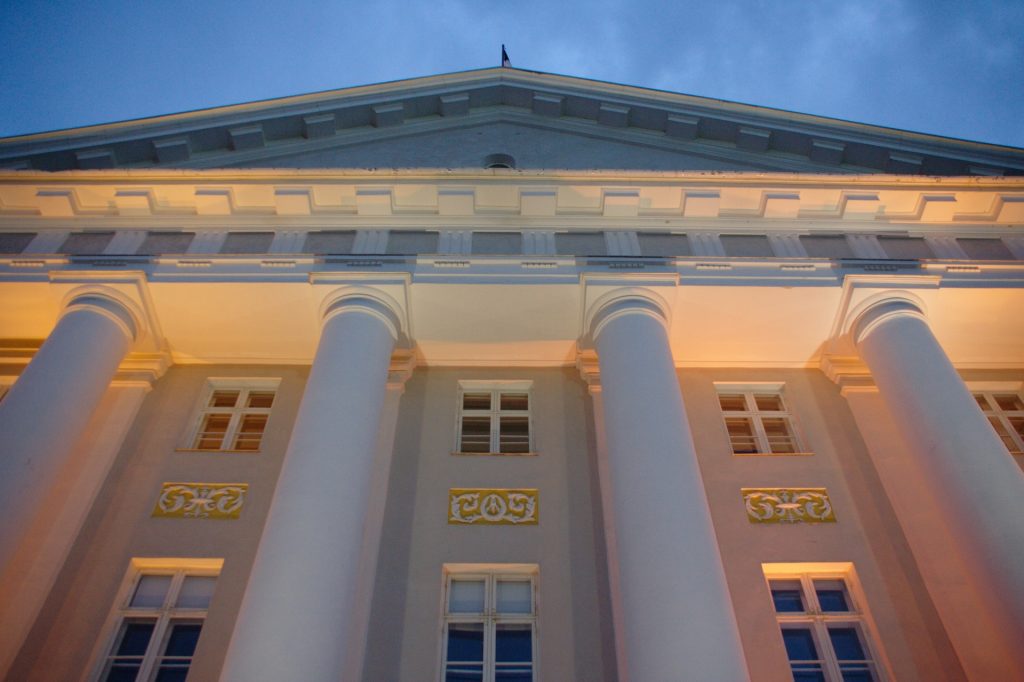Economists made proposals for increasing Estonia’s competitiveness
On behalf of the Foresight Centre, economists from the University of Tartu analysed the bottlenecks of Estonian economic policy and made proposals to increase the competitiveness of the economy.

Uku Varblane, head of research at the Foresight Centre, said that there is not enough public discussion in Estonia about strengthening the country’s long-term competitiveness. “Considering we are in the second year of economic recession, Estonia’s competitiveness is very much on the agenda today. Although it is acknowledged that changes need to be made, there is no agreement on the general direction of the country’s development and specific steps that need to be taken to increase competitiveness,” said Varblane.
On behalf of the Foresight Centre, economists from the University of Tartu analysed the proposals supporting the development of the Estonian economy and their impact. Proposals that passed the economists’ approval were divided into those of long-term importance and those offering solutions in the medium and short-term perspective.
In order to increase Estonia’s competitiveness in the long term, the authors of the analysis recommend dividing Estonia into two NUTS 2 level regions of the European Union. One region would be formed by Harju County together with Tallinn, and the other region would comprise the rest of Estonia.
Namely, the rate of European Cohesion Fund support depends on the income level of the financed region, or GDP per inhabitant. Until the beginning of the current funding period (2021-2027), the whole of Estonia was part of the less developed regions. However, by the beginning of the next funding period, i.e. by 2028, Estonia’s income level would probably rise to over 90% of the European Union average, which would reduce support from European Cohesion Fund and increase the rate of self-financing. In the case of two regions, the area outside Harju County would continue to qualify for a higher rate of support. “Dividing the country into two regions would be a motivation for more investment outside of Harju County, it would contribute to the harmonisation of regional income levels and it would align with the principles of cohesion policy. Estonia and Latvia are the only Central and Eastern European countries that do not use the differentiation of regions in the capital,” said Varblane.
In addition, the authors of the analysis find that it would make sense to prioritise the development of energy-intensive industry in Estonia and attract it to the country. By 2030, Estonia has set the goal of producing electricity from renewable sources for 100% of its annual electricity consumption. The projected consumption volume, which should be taken into account when creating additional renewable energy capacities, should therefore be significantly higher than Estonia’s current annual consumption volume, which is 8.5 TWh. For example, the Estonian Business and Innovation Agency is of the opinion that it would be possible to bring industrial projects to Estonia with an energy requirement of up to 5 TWh. Electricity consumption will also increase with the launch of Rail Baltic and the electrification of train lines within Estonia, as well as with electric cars becoming widespread.
The authors emphasise that Estonia’s green energy development plan should not be a plan to export electricity. The main emphasis must be placed to cooperation between developers and energy-intensive producers, avoiding a situation where the state would have to guarantee a fixed price to wind farm developers.
Economists consider the proposal to make secondary education mandatory important in the long term, so that students do not have to make specialist education choices too early and can make them after completing secondary school. “Estonia has an obvious problem with the quality of post-basic school vocational education, as it does not provide secondary education that is equivalent to secondary school and among those who have completed this level of education, the unemployment rate after graduation is one of the highest,” said Varblane.
In the medium and long term, proposals supporting the Estonian economy include, for example, migration policy reform, the introduction of the e-employee concept, the establishment of a competence centre for rare earth metals in Estonia and support for the relocation of companies within Estonia.
In the short term, increasing the supply of domestic raw timber and reducing the transport and energy costs of companies with the provision of tax reliefs would help to restore Estonia’s competitiveness. In the analysis, the acquisition of gas reserves to stabilise the price level and the implementation of measures to promote digitalisation are also proposed. Economists consider it important to provide a state guarantee for large investments and the thoughtful use of public procurement to create new market opportunities.
“Analysis of proposals supporting the development of the Estonian economy” (in Estonian) has been commissioned by the Foresight Centre. The authors of the analysis are University of Tartu economists Urmas Varblane, Raul Eamets, Annela Anger-Kraavi and Diana Eerma.
Latest news
-
27.06 2025Current low birth rate will lead to up to 1.3 billion euros less tax revenue in the future
In its new short report “The impact of population ageing and low birth rate on long-term state revenue and expenditure”, the Foresight Centre notes that the lower than projected birth rate will reduce government spending on family policy and education, but in the long term, it will mean up to 1.3 billion euros less in tax revenue.

 An independent think tank at the Riigikogu
An independent think tank at the Riigikogu